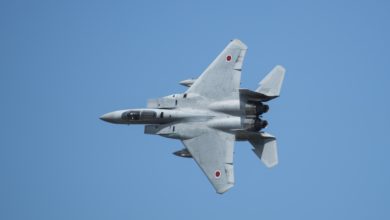Japan Considers US Partnership on Railgun Project: Report
Japan is considering partnering with the US on a railgun-based counter-hypersonic weapon development program.
Tokyo has listed railgun as one of the military’s top research priorities, working on the technology for the last 10 years, National Defense Magazine reported, citing a senior government official.
According to the outlet, the country believes it could conclude the research with Washington’s help.
“We could use help with the guidance system and power storage,” the Japanese Ministry of Defense Acquisition, Technology, and Logistics Agency’s Shigenori Mishima said.
“Those are your strengths. We have strengths, for example, constructing the rails — in material sciences.”
Mishima said that he has encouraged the primary Japanese contractor on the program, Japan Steel Works, to reach out to US defense contractors BAE Systems and General Atomics to collaborate.
Pentagon Railgun Projects
BAE worked on a US Navy railgun project as a prime contractor while General Atomics clinched a three-year-long US Army railgun project in 2018.
BAE developed a 32-megajoule railgun in a laboratory setting that could fire a projectile 220 miles at Mach 7.5.
However, phase 2 of the program was not initiated due to technical hurdles “concerning the overheating of the railgun,” National Defense Magazine wrote.
Similarly, General Atomics delivered a 10-megajoule railgun prototype to strike over 60 miles (96 kilometers) away, but the project ended in 2021.
BAE, General Atomics Open to Collaboration
Both companies revealed that they have communicated with the Japanese government and industry representatives and are willing to collaborate.
“BAE Systems has spoken with the Japanese government and industry about the railgun and its capabilities,” BAE Systems spokesman Tim Paynter said. “We work closely with the US Department of Defense to support international allies and partners and provide innovative solutions to deter current and future threats.”
General Atomics Electromagnetic Systems Group representative Meghan Ehlke added, “Over the last year, General Atomics Electromagnetic Systems has met with both [Acquisition, Technology and Logistics Agency] and Japan Steel Works a number of times to discuss Japan’s railgun program.”
“Not only would we welcome the opportunity, General Atomics Electromagnetic Systems looks forward to working with the US and Japanese governments in helping Japan increase their defense capabilities.”
Japan’s Railgun Goals
The Japanese government set aside 6.5 billion yen ($56 million) last year for a railgun-based counter-hypersonic weapon system.
The Acquisition, Technology, and Logistics Agency intends to deploy the system by the end of the decade.
A railgun uses electromagnetic force to launch a high-velocity projectile up to seven or more times the speed of sound. Having greater speed than conventional projectiles allows the system to launch more projectiles, enhancing the chance of intercepting incoming missiles.
However, there is a question mark over the railgun’s viability, as it requires significant power to operate. Secondly, the power generates a lot of heat, which makes the system too hot to operate.
“Railguns operate by exerting extreme electromagnetic forces on a projectile, but those forces act against the railgun structure itself. This means they tend to self-destruct,” the National Defense Industrial Association’s Emerging Technologies Institute Mark Lewis said.
A strategist at the New America think tank Peter W. Singer added, “If the technical issues were worked out, which is an obvious ‘if,’ it would have significant application in areas ranging from anti-missile to strike, you name it. Eventually, it will have its day. A key is not just the potential speed and range, but the relative cost per shot versus a missile.”












